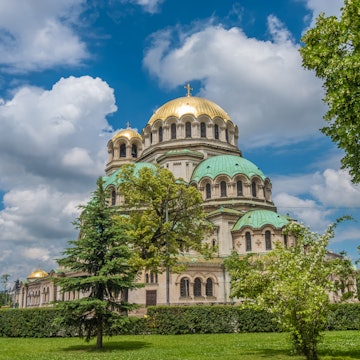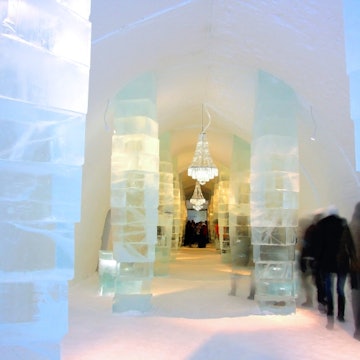

Marstrand Sweden
If you want to vacation like the Swedish locals (and you do – they’ve made it an art), consider exploring Sweden’s west coast. As island-hopping goes, the Stockholm archipelago gets all the love from the travel brochures, but few places on earth can match the weatherbeaten beauty of the Bohuslän Coast outside Gothenburg.
About 8,000 granite islands make up the West Sweden archipelago, which stretches all the way north of Gothenberg to the Norwegian border. The landscape of Bohuslän is a combination of smooth grey (and sometimes pink) rocks and colourful fishing villages caught between sky and sea.
Activities include lounging around on sun-warmed flat rocks, gorging on the region’s incredible seafood, swimming in the pristine sea, strolling narrow streets among rickety wooden buildings, and cycling gentle island paths.
Marstrand
The usual first stop heading north up the coast is chic, sophisticated Marstrand, a yachting paradise that hosts several major sailing championships each year. It’s played many roles over the years: fortress against the Danes, capital of the herring industry, destination for the aristocracy who came to soak in its bathhouses. These days it’s an idyllic place for a day trip full of shopping, eating and lounging. An express bus goes frequently from Gothenburg’s bus station to the ferry dock. You won’t be alone – swarms of sun-seekers come in on the Marstrand ferry, which drops you at the town centre in five minutes. But it’s easy to find solitude here. Just find the footpath (‘naturstig’) that leaves from Carlstens fortress and circles the rocky edges of the island. You’ll pass tiny bathing nooks, sunning rocks, and a lighthouse along the way. If you stay the night, venture out at dawn for a traditional ‘morning dip’ in the sea.
Åstol and Dyrön
Åstol and Dyrön, two car-free islands just off Tjörn, offer yet another glimpse of life on a tiny, remote Swedish island. The main draw for visitors to Åstol, once known for its vibrant fishing industry, is its smokehouse and summertime restaurant, Åstols Rökeri, where you can have a meal or pick up a variety of local fish to go. The more agricultural island of Dyrön has an adorable harbour, good walking trails, a sauna, and excellent views of nearby islands, including Åstol and even the fortress atop Marstrand.
Reach either island by passenger ferry from the harbour in Rönnäng. There’s also a ferry to Dyrön operated by Västtrafik that runs from the island of Rökan, which is accessible by train/bus from Gothenburg.
Klädesholmen
The ‘herring island’ of Klädesholmen, at the far south corner of Tjörn and reachable via a bridge, is one of the west coast’s most picture-perfect spots. There were once 30 herring processing factories here, but only a handful remain. A tiny herring museum tells you all you need to know about Sweden's enduring love for its favourite fish. Klädesholmen also boasts Sweden's first 'floating hotel,' Salt & Sill.

Tjörn
A large bridge swoops from Stenungsund (on the Swedish mainland) to the island of Tjörn, a magnet for artists thanks to its striking landscapes and cutting-edge watercolour museum. Sailors are equally smitten, with one of Sweden’s biggest sailing competitions, the Tjörn Runt, taking place here in August. Skärhamn is the island’s main settlement, now a major destination thanks to the superb Nordiska Akvarellmuseet, a sleek waterside building housing changing exhibits by regional and international artists. The five ultra-modern cubes right over the water are guest studios, in case you need some extra daydream-fuel.
The Tjörn-Express bus runs up to six times on weekdays from Gothenburg’s bus terminal to Tjörn, calling at Skärhamn, Klädesholmen and Rönnäng. Bus 355 from Stenungsund crosses the island to Rönnäng.
Mollösund
Supercute Mollösund, at the southwest edge of the island of Orust, is the oldest fishing village on the Bohuslän coast. There’s a picture-perfect harbour and several scenic walking paths for a gentle pick-me-up. You can drive there or catch the Orustexpressen bus runs (frequent on weekdays) direct from Gothenburg via Henån. There are also ferry trips here run by Gunnans Båtturer from Marstrand (they travel on to Tjörn after a stop in Mollösund.
Käringön
Reached by passenger ferry from the village of Tuvesvik on Orust, car-free Käringön is laced with nature trails and places to swim, including kid-friendly swimming spots, a bathhouse with separate sunbathing areas for men and women on the south side of the island, and of course a nude beach toward the southwest. It’s been inhabited since the 1590s, and the tourism infrastructure is well developed: you’ll have no trouble finding excellent places to eat and sleep here. The town boasts a wealth of pristine historic houses to admire.
In the summer, Käringön serves as an important hub for ferry traffic around the whole archipelago. Ferries from here reach Tuvesvik, Klädesholmen, Marstrand, Lysekil and Uddevalla.

Smögen
A still-working fishing village that looks like it was designed for Instagram, Smögen sports a buzzing waterside boardwalk, an early morning fish auction and a variety of great seafood options. Its famous boardwalk, Smögenbryggan, whose bars and shops lining the harbour are a huge summertime draw, is about 1km long and hosts a variety of picture-perfect scenes. Smögen is connected to the mainland by a bridge. From here, you can also take a ferry to the island of Hållö, a birdwatching nature preserve with a lighthouse and youth hostel.
Koster Islands
From Strömstad’s north harbour, boats go to the beautiful Koster Islands every 30 minutes from July to mid-August, less frequently at other times. Tiny North Koster is hilly and has good beaches. Larger South Koster is flatter and better for cycling, with bike-rental facilities, restaurants and two large beaches at Rörvik and Kilesand. You’ll also find Sweden’s national marine park, Kosterhavet National Park, here – it’s home to 12,000 species of marine life and Sweden’s largest seal colonies.
Getting around
If you have your own wheels, you can drive to most of the islands described here. If not, the public transport service (Västtrafik) runs an excellent bus and ferry network across the archipelago. Planning to visit several islands? A Västtrafik card is your friend. One- and three-day visitor cards are available (or, for longer stays, a 30-day card).
From Gothenburg, buses run frequently from Nils Ericsson bus terminal to most archipelago destinations. Express buses go hourly to the Marstrand ferry stop (one hour, 68kr) and almost as frequently to key points in Orust and Tjörn (changing in Stenungsund). You can get schedules, tickets and information at the terminal.
















